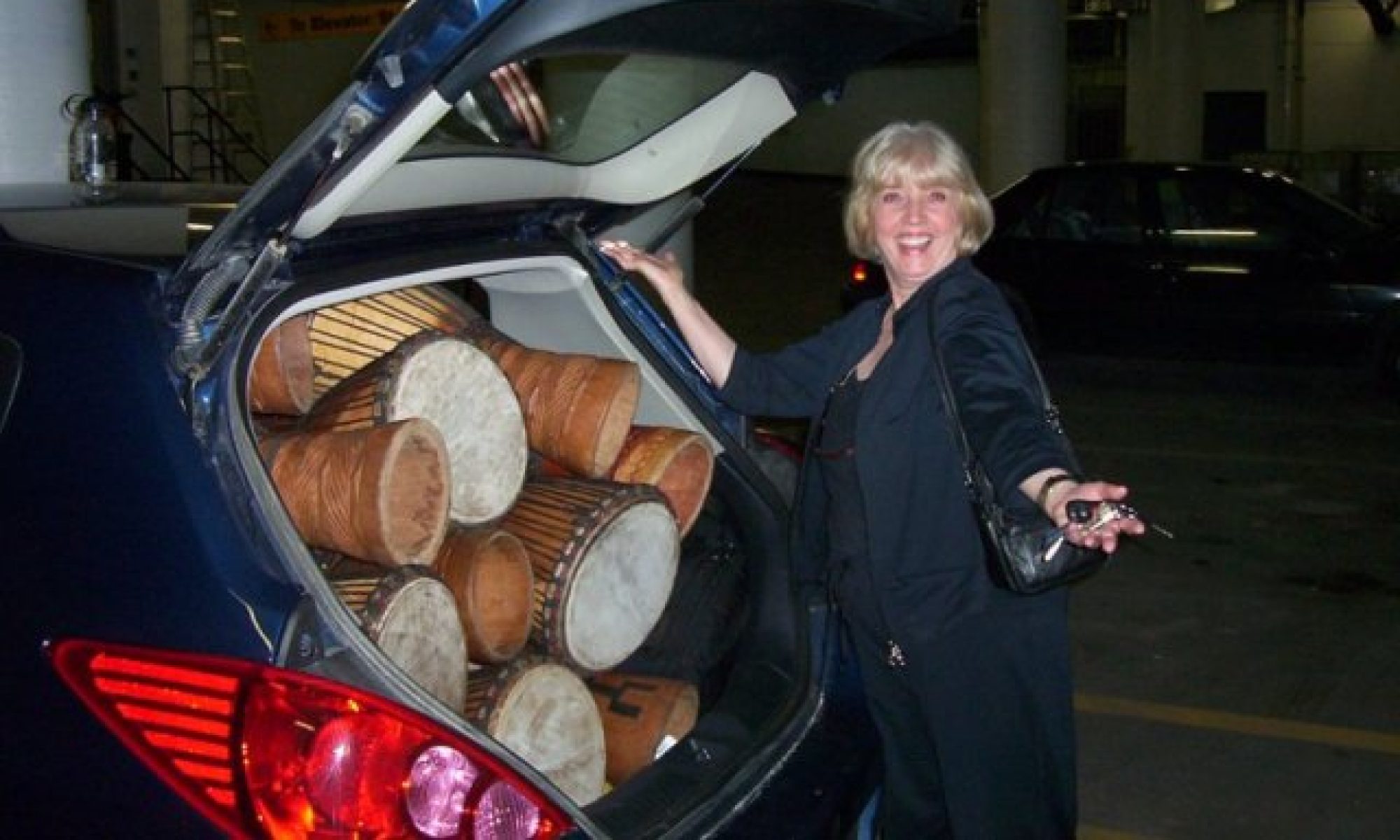
I am not a master drummer – I am a singer, song leader and multi-instrumentalist who can never get enough djembe! Although I teach in a drum circle format, I do not teach in the usual West African manner in which students learn a combination of traditional patterns in order to accompany a drum soloist (there are many fine drummers across the country who teach in this model, so support your local talent to learn more of this amazing tradition). My main goal as a drummer and teacher is to build community and to help people develop skills for accompanying group singing.
If you are interested in booking me for a drum workshop or for other events, please contact us.
Notes regarding the patterns
The patterns here are a combination of traditional West African/Caribbean rhythms and other simple patterns I have found work well for beginning djembe players. Embellishing the rhythms here is a good thing, so use them as a starting point in developing your own particular feel! To explore the West African drumming tradition more fully, I recommend buying a copy of David Thiaw and Joanne Melvin’s book and CD, African Drum Workshop, Volume One, available at http://www.davidthiaw.ca.
These patterns involve only Bass and Tone strokes, indicated as B and T. There is also a third kind of stroke called the slap, but this a harder technique to master and best left for later learning once the basic bass and tone are well absorbed. The L and O refer to your hands, Lead and Other (lead with your dominant hand, whether left or right). Clicking on the name of the pattern will link you to an mp3 audio file of the pattern being played. Happy drumming!
Note: We have djembe tutorial videos on the MelodicArts YouTube page which demonstrate many of the patterns below. Hope you find them helpful!
| Merengue (4/4 time) | |||||||||||||||
| 1 | e | + | a | 2 | e | + | a | 3 | e | + | a | 4 | e | + | a |
| B | T | T | T | T | T | B | B | B | B | ||||||
| L | O | L | O | L | O | L | O | L | O | ||||||
| Aramelay (4/4 time) | |||||||||||||||
| 1 | + | 2 | + | 3 | + | 4 | + | ||||||||
| B | T | T | T | T | |||||||||||
| L | L | O | O | L | |||||||||||
| A – | ra | – | me – | lay | |||||||||||
| Gallop (simple 2/4 time) | |||||||||||||||
| 1 | + | 2 | + | ||||||||||||
| B | T | T | |||||||||||||
| L | O | O | |||||||||||||
| Soca or Calypso (2/4 time) | |||||||||||||||
| 1 | e | + | a | 2 | e | + | a | ||||||||
| B | T | B | T | ||||||||||||
| L | O | L | O | ||||||||||||
| Want | a | choc | – | olate | |||||||||||
| Universal Break (2/4 time) | |||||||||||||||
| 1 | e | + | a | 2 | e | + | a | 3 | e | + | a | 4 | e | + | a |
| T | T | T | T | T | T | T | T | ||||||||
| L | O | L | O | L | O | L | O | ||||||||
| This | is | a | u | – | ni – | ver- | sal | break | |||||||
| Basic 3/4 pattern | |||||||||||||||
| 1 | + | 2 | + | 3 | + | ||||||||||
| B | T | T | T | T | |||||||||||
| L | L | O | L | O | |||||||||||
| Basic 6/8 pattern | |||||||||||||||
| 1 | + | a | 2 | + | a | ||||||||||
| B | B | T | T | ||||||||||||
| L | L | O | O | ||||||||||||
| More complex 6/8 pattern | |||||||||||||||
| 1 | + | a | 2 | + | a | ||||||||||
| B | T | B | T | T | |||||||||||
| L | L | O | L | O | |||||||||||
| Slow 6/8 pattern | |||||||||||||||
| 1 | + | a | 2 | + | a | ||||||||||
| B | T | T | T | T | T | T | T | T | T | ||||||
| L | L | O | L | O | L | L | O | L | O | ||||||
| Note: This is just the 3/4 pattern above, repeated twice, with the beginning of the second pattern (beat 2) as an accented tone rather than as a bass note | |||||||||||||||

